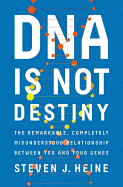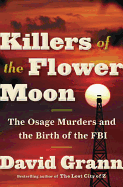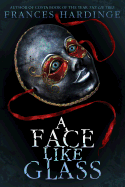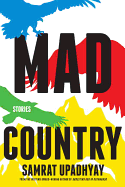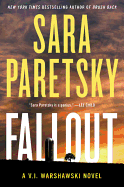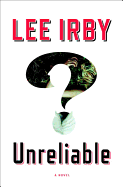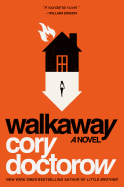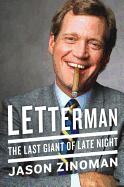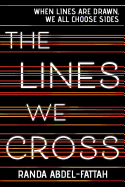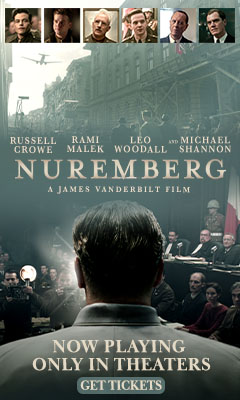Tuesday, May 9, 2017
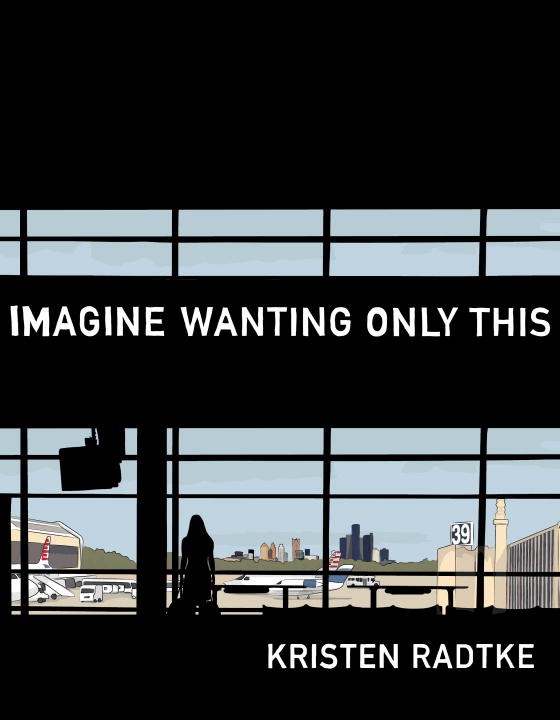 I've read Kristen Radtke's graphic memoir Imagine Wanting Only This three times. The title, with its intricate weave of possible interpretations, keeps tracking me down, won't let go. And fragments of this book have apparently sublet my mind's eye, the panels flickering by like movie scenes, always leaving traces.
I've read Kristen Radtke's graphic memoir Imagine Wanting Only This three times. The title, with its intricate weave of possible interpretations, keeps tracking me down, won't let go. And fragments of this book have apparently sublet my mind's eye, the panels flickering by like movie scenes, always leaving traces.
Film analogies and references are perhaps inevitable here, both for creator and reader. Among other things, Radtke is the film and video editor at TriQuarterly magazine. For me, reading Imagine Wanting Only This feels like watching a documentary film. That response is certainly enhanced by sections like her chapter on Chris Marker's Sans Soleil, or when she discovers a video about the Chicago "urban explorer" whose disintegrating photographs play a key role in her book.
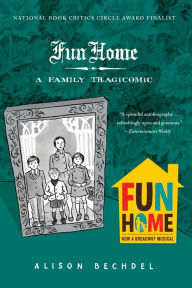 In the weeks since my first reading, two other books have threaded themselves visually into my engagement with Imagine Wanting Only This. The first is Alison Bechdel's Fun Home: A Family Tragicomic and its Broadway musical adaptation. Staging this show at the Circle in the Square theater allowed lighting designer Ben Stanton to place some scenes in squares of white light (at the 30 second mark here), as though the characters were living inside comic book panels. The image stayed with me. Seeing is believing.
In the weeks since my first reading, two other books have threaded themselves visually into my engagement with Imagine Wanting Only This. The first is Alison Bechdel's Fun Home: A Family Tragicomic and its Broadway musical adaptation. Staging this show at the Circle in the Square theater allowed lighting designer Ben Stanton to place some scenes in squares of white light (at the 30 second mark here), as though the characters were living inside comic book panels. The image stayed with me. Seeing is believing.
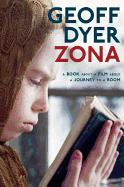 Another thread I've somehow woven into this bibliotapestry is Geoff Dyer's Zona: A Book About a Film About a Journey to a Room, which is a take-by-take account of Andrei Tarkovsky's classic movie Stalker, "summarizing the action of a film almost devoid of action." Zona turns words into frames, accompanied by voluminous, often personal, footnotes. My memory of reading that book also focuses on the definitive straight lines dividing main text from footnotes, like borders... or the initial line drawn to make a panel.
Another thread I've somehow woven into this bibliotapestry is Geoff Dyer's Zona: A Book About a Film About a Journey to a Room, which is a take-by-take account of Andrei Tarkovsky's classic movie Stalker, "summarizing the action of a film almost devoid of action." Zona turns words into frames, accompanied by voluminous, often personal, footnotes. My memory of reading that book also focuses on the definitive straight lines dividing main text from footnotes, like borders... or the initial line drawn to make a panel.
All of this inspires me to ask a question that's actually a recommendation: Have you "seen" Imagine Wanting Only This yet? --Robert Gray, contributing editor
The Stars Are Fire
by Anita Shreve
Inspired by the true story of Maine's largest fire in 1947, Anita Shreve takes readers into the fictional life of Grace Holland; her husband, Gene; their two children; and their respective in-laws. Grace is a stay-at-home mom, content for the most part, despite the controlling influence of her husband and the lack of passion she feels toward him.
Suddenly an out-of-control fire races along the Maine coastline, threatening her family. With Gene gone to fight the flames, it's up to Grace to save herself and her children by cowering in the ocean. When the danger passes, she is homeless, penniless and cannot find her husband, but without his dominance, she finds inner strengths and passions she never knew she had. She learns to drive, gets a job and discovers that life is rich and vibrant, full of open doors she only dreamt of finding when living with Gene.
In this mood-centric, romantic novel, Shreve interweaves Grace's musings about her desires with the day-to-day details of life for a woman with two small children who has few worldly experiences, but must forge ahead if she hopes to live. Authentically set in a postwar coastal town, where the year-round residents and the rich don't usually mingle, Shreve conveys the proper tone of obedience and married obligations while exploring the ambitions, desires and drives of a woman suddenly experiencing freedom and her own strength for the first time. Grace's gradual awakening to her own abilities is deftly depicted and leaves readers haunted by her story long after the last page. --Lee E. Cart, freelance writer and book reviewer
Discover: After facing death in a horrific fire, a woman and her children find new life and joy among the ruins.
Mad Country
by Samrat Upadhyay
As a Nepalese native living in the United States, Samrat Upadhyay (The City Son, Buddha's Orphans) has a particular viewpoint on the connections between his former and adopted homes. And while Mad Country takes its title from a story set entirely in Nepal, other pieces in this collection of short works prove that the name could easily describe the United States. Indeed, Upadhyay's writing is best when it blurs the line between experiences, showing how people can conflate cultures as they look for meaning in their own lives.
That conflation is best represented in standout pieces like "Freak Street," in which an American from Ohio identifies so closely with her Nepalese hosts she begins to think of herself as native to a country she's lived in for six months. In the Kafkaesque "Dreaming of Ghana," a young man's dreams of an indistinct African country bleed into his real life, with heartbreaking consequences. And in the final story, "America the Great Equalizer," a Nepalese graduate student loses his sense of identity after the shooting of Michael Brown in Ferguson, Mo., and the resulting riots.
A lesser author might use such stories to push a "humans are all the same" theme or, worse, attempt to judge cultures against each other. But Upadhyay is less interested in culture clash than culture shock, and how people's identities can be rewritten in the face of that shock. If anything, that is the unifying theme Mad Country skillfully illuminates: the attempt by the psyche to re-create itself in the face of trauma. --Noah Cruickshank, adult engagement manager, the Field Museum, Chicago, Ill.
Discover: Nepalese author Samrat Upadhyay's short fiction explores identity in the face of dramatic change.
Mystery & Thriller
Fallout
by Sara Paretsky
When V.I. Warshawski is asked to look for an aspiring filmmaker who has become the main suspect in a break-in, the Chicago private detective follows the young man's trail to Lawrence, Kansas. Apparently August, the filmmaker, was headed there with former Hollywood actress Emerald Ferring, to make a documentary of her early years spent in the area.
But August and Emerald disappeared not long after they arrived in town. When a troubled woman calls V.I. to say she saw them, an attempt is made to silence the woman before she can talk. Then people start dying--residents who might have information about August and Emerald's whereabouts, as well as what happened three decades ago around a missile silo in town. The military says the silo has been decommissioned, but V.I. discovers it may not be as harmless as it appears.
After more than 30 years, V.I. remains an appealing protagonist in Sara Paretsky's Fallout. The private eye's forthright manner and low tolerance for lies are a tonic in an age when falsehoods dominate current events. Her assistant, the golden retriever Peppy, is a joy, as is the humor V.I. shows regarding residents who claim to know nothing about August and Emerald, despite knowing everything about everyone's business.
But Fallout covers deadly matters, too, and tackles social issues, including racial tensions in the South. Paretsky's writing remains relevant while reminding readers of lessons from the past, for as one character says, what's happening now is "just another chapter in a long book." --Elyse Dinh-McCrillis, blogger at Pop Culture Nerd
Discover: Chicago private investigator V.I. Warshawski heads to Kansas to search for a filmmaker and an actress who are missing.
Unreliable
by Lee Irby
In a viciously delicious thriller, Lee Irby (The Van) introduces a charming, refined protagonist who could be a monster, a deranged jilted lover or simply one of love's losers. From beginning to end, the only thing readers can rely on is that the narrator is a liar.
Edwin Stith is a mild-mannered, unassuming English professor at a "leafy liberal arts school" in Ithaca, N.Y., whose failed writing career, recent divorce and sexual impotency provide ready fodder for sympathy. A dutiful son, he's headed home to Richmond, Va., for his mother's wedding. However, he's aware this story in and of itself has no teeth, so he mentions to the reader that he may also be on the run for murdering his ex-wife, Bev. Or maybe he didn't. Or maybe he killed a waitress at a truck stop--or maybe not. Maybe Eddie himself is the murder victim. "It doesn't much matter," he devilishly assures us. "Mine, hers, his. You want a body and I want to give you one."
To find out, readers must come along for the ride as Eddie reconnects with his wealthy, aging mother, who's marrying a man Eddie's age; his long-lost high school sweetheart, Leigh Rose; and a handful of old school nemeses and acquaintances who mean Eddie and his rekindled romance no good. Riding shotgun with Eddie will have even the doughtiest reader feeling claustrophobic, hostage to a man who will say anything to keep an audience. Irby sculpts every thrill of terror out of pure psychological manipulation, adeptly batting the reader around like a catnip mouse. Unreliable is tense, hypnotic and elegantly assembled. --Jaclyn Fulwood, blogger at Infinite Reads
Discover: In this mind-bending psychological thriller, the charming narrator could be a lecherous killer or a lovelorn victim, but he's definitely a liar.
Science Fiction & Fantasy
Walkaway
by Cory Doctorow
Cory Doctorow--Internet doyen and successful author in a range of genres, from YA novels like Little Brother to the nonfiction manifesto Information Doesn't Want to Be Free--returns to adult fiction with Walkaway. The novel opens in a dystopia where bantering malcontents Seth, Natalie and Hubert, Etc. (so nicknamed for his 20-odd middle names) meet at a "Communist party"; they flirt with counterculture ideas while dodging the watchful eye of the establishment. When the party ends in tragedy, the trio is inspired to drop out of society and join the "walkaways," a group of people resembling technophilic hippies in their idealism and revolutionary lifestyle. Each character finds his or her place among the dreamers after making the harsh adjustment to a society organized in direct counterpoint to the dog-eat-dog, wildly unequal capitalist norms of what they come to refer to as Default.
The walkaways' idealism is supported by nearly miraculous technological achievements--they live in a "post-scarcity" society where questions of food and shelter are more or less solved by printers capable of manufacturing almost anything at a moment's notice. They even seem to have cracked a problem that Default's hyper-rich "zottas" have failed to solve for years: how to live forever. That discovery prompts a vicious crackdown from Default, escalating quickly into a war pitting hacktivist egalitarians against tyrannical robber barons.
Walkaway is awash in unrestrained nerdery. Doctorow is teaching, but he's also having fun, and it's a pleasure to watch him twist the two together. --Hank Stephenson, bookseller, Flyleaf Books, Chapel Hill, N.C.
Discover: Cory Doctorow's vision of the future pits a rag-tag group of techno-utopians against the dystopian forces of unchecked capitalism.
Biography & Memoir
Manderley Forever: A Biography of Daphne Du Maurier
by Tatiana de Rosnay, transl. by Sam Taylor
Tatiana de Rosnay is the author of 10 contemporary novels, including A Paris Affair and The Other Story, whose themes often deal with the dark underpinnings of love, romance and secrets. In Manderley Forever, she explores the life of Daphne du Maurier, who made an indelible impression on de Rosnay from the time she was 11 years old, when she read Rebecca, du Maurier's most popular novel. Published in 1938, Rebecca is psychological suspense about secrets, old flames, jealousy and the looming manor Manderley. Like her subject, de Rosnay hails from a British and French bloodline, a factor that contributed to her fascination with du Maurier and ignited her quest to write a comprehensive biography and uncover the secrets of du Maurier's life, work and inspirations.
Du Maurier was a shy, observant, sensitive child who was largely shaped by patriarchal influences, as well as her two, equally creative sisters, an often aloof mother who was chronically neglected by her wandering, limelight-seeking husband. Du Maurier would later fall in love and marry Major Thomas Browning, 10 years her senior. The demands of his decorated military career--along with the pressures of marriage, motherhood and war--posed significant challenges to her freedom, aspects of which were often reflected in her work, which included dark, gothic romances as well as biographies.
The narrative is distinguished by de Rosnay's esteem and empathy. This deep and thoroughly researched biography offers riveting drama while presenting compelling reasons as to why du Maurier--whom many claimed was funny and cheerful--produced such a gloomy oeuvre, beloved by legions of fans but often scorned by the critics. --Kathleen Gerard, blogger at Reading Between the Lines
Discover: A contemporary French novelist explores the fascinating, creative life of one of her favorite literary inspirations, Daphne du Maurier.
Letterman: The Last Giant of Late Night
by Jason Zinoman
When David Letterman retired in 2015, after 33 years hosting his late-night comedy talk show, "he received a send-off befitting a secular saint," writes Jason Zinoman, comedy critic for the New York Times. Letterman's two TV series (CBS's Late Show and NBC's Late Night) were wildly inventive, outrageous, combustible and influential. But backstage they were a hotbed for dysfunction, with Letterman the nucleus of it. Described as "a spectacularly committed hypochondriac," Letterman "never enjoyed the successes and scrutinized every failure, musing darkly about the implications and pivoting from self-criticism to despair in a blink," writes Zinoman (Shock Value).
His uncompromising and eye-opening biography is a love letter to the magic created on both shows, but never ignores the hostile and combative atmosphere behind the scenes with a "difficult, fascinating and self-lacerating character who hated revealing himself in his work but couldn't help doing so." Zinoman's knowledge is encyclopedic and his insights are perceptive. Letterman is filled with surprisingly candid recollections culled from Zinoman's interviews with the comedian, his writers (including co-creator and ex-girlfriend Merrill Markoe), producers, directors, production staff and frequent guests like Steve Martin and Sandra Bernhard.
This biography offers a fascinating look at how David Letterman's comedy and personality evolved over the years, and how his TV shows mixed absurdist, conceptual, satirical, slapstick, silly and sophisticated humor--and somehow made it cohesive. Letterman is a frank tribute to the painful process of creating comedy. Fans of TV, comedy and celebrities behaving badly will find it irresistible. --Kevin Howell, independent reviewer and marketing consultant
Discover: This bio of acerbic TV host David Letterman reveals how backstage dysfunction produced award-winning television.
History
Killers of the Flower Moon: The Osage Murders and the Birth of the FBI
by David Grann
The Osage Nation once roamed the Great Plains, from Missouri to the Rockies. As the buffalo population died off, their dwindling numbers finally forced them to negotiate a deal with the United States government to live in what one chief called a "big pile of rocks" in the no-man's land of northeast Oklahoma. The one bright spot? The tribe's savvy lawyer who secured mineral rights in perpetuity for the original 2,000 registered members on the Osage Roll. When oil was discovered outside rundown Pawhuska in 1894, their world was upended. By the Roaring '20s, "the Osage were considered the wealthiest per capita people in the world." Then, mysteriously and systematically, tribe members began to die of poison, odd diseases, gunshots, even a house bombing. The ragtag local police found no suspects as the deaths continued to mount. The Osage "Reign of Terror" had begun.
Killers of the Flower Moon is the sterling history of this forgotten drama that precipitated the first successful major crime prosecution by J. Edgar Hoover's fledgling Federal Bureau of Investigation. In the seasoned hands of historian and New Yorker staff writer David Grann (The Lost City of Z), it is a thoroughly researched narrative with helpful archival photos--as colorful as many of the characters and as well paced as a good true crime thriller. Tracking the killers is Hoover's former Texas Ranger Tom White, who was "six feet four and had the sinewy limbs and the eerie composure of a gunslinger." In Killers of the Flower Moon, Grann turns his years of primary source research into a storytelling wonder. --Bruce Jacobs, founding partner, Watermark Books & Cafe, Wichita, Kan.
Discover: David Grann's history of the Osage "Reign of Terror" is a stellar combination of dogged research and provocative storytelling.
Science
Drawdown: The Most Comprehensive Plan Ever Proposed to Reverse Global Warming
by Paul Hawken, editor
As editor Paul Hawken (Blessed Unrest) writes in the introduction to the immensely compelling Drawdown: The Most Comprehensive Plan Ever Proposed to Reverse Global Warming, "reversing global warming requires a change in how we think and what we do." To help initiate these changes, Hawken--who's written seven books on ecological business solutions--and more than 120 scientists formed Project Drawdown, a think tank designed to draft, model, fact-check, review and validate scientific data surrounding climate change and the solutions proposed to end it. Drawdown contains 100 of the most viable solutions they found.
The collection comprises a variety of approaches, including the installment of more green energy generators like wind turbines and solar panels, and the repopulation of land above the Arctic Circle with grass-grazing mammals. The scientific reasoning that supports each solution is offered in layman's terms, and important numbers--such as a plan's total cost, cost per capita and predicted total reduction of carbon from the atmosphere--are highlighted for easy comparison.
Impressively, each strategy also includes a discussion of its inherent challenges. In the section devoted to wave and tidal energy, for example, scientists explain that saltwater damages equipment over time and that waves are less predictable than wind and sunlight--making their energy more difficult to harness. By acknowledging these challenges, the Project's scientists have collated a highly persuasive collection that world leaders--and community activists--can discuss frankly and with the intent of further improvement. Drawdown is not only comprehensive, it's crucial to our world's conversation about climate change. --Amy Brady, freelance writer and editor
Discover: Drawdown proposes 100 critical solutions to ending climate change.
DNA Is Not Destiny: The Remarkable, Completely Misunderstood Relationship Between You and Your Genes
by Steven J. Heine
Cultural psychologist Steven Heine aims to shatter myths about the overarching power of genes in his thought-provoking treatise DNA Is Not Destiny: The Remarkable, Completely Misunderstood Relationship Between You and Your Genes.
In nine incisive chapters, DNA Is Not Destiny provides a brief history of genetics as a scientific discipline before delving into the tricky issues of genetic testing, heritable diseases, race, gender, sexual orientation and social engineering. At the heart of Heine's argument is a warning against many people's fallacious tendency to ascribe effects and traits to underlying and seemingly immutable essences. Heine criticizes the pervasive sense of determinism found in popular views of genetics, which, if not called out, can lead to destructive and discriminatory beliefs. In reality, Heine authoritatively explains, most human traits are the result of genetic, environmental and cultural factors interacting with each other in a complex web. Very few conditions are irreversibly determined by genetics alone.
Besides deconstructing essentialist views and the danger they pose to human rights, Heine targets the false promises of genetic testing and consulting companies. He even reveals his own test results as a way to pinpoint what information people needlessly obsess over, including widely variable risk estimates for certain diseases. In this and myriad other ways, DNA Is Not Destiny is a powerful and important read that necessarily grounds a new era of science and healthcare. --Scott Neuffer, freelance journalist, poet and fiction author
Discover: With sharp and timely analysis, a cultural psychologist addresses growing misconceptions about the power of genes.
Children's & Young Adult
A Face Like Glass
by Frances Hardinge
Caverna is a mad, marvelous underground world filled with artisan-crafted luxuries--"wines that rewrote the subtle book of memory, cheeses that brought visions, spices that sharpened the senses"--whose residents long ago retreated to its tunnels when the aboveground cities fell "into ruin beneath the ravages of war and weather." These underground citizens are born without the ability to adjust their facial features into expressions. Specially trained "Facesmiths" teach people anywhere from one or two placid, servile Faces (for the low-class Drudges)--to several hundred subtle Faces (for the affluent elite, who might choose to wear a smile called "Face No. 301, Dewdrops Regarded in a Spirit of Hope").
Neverfell is a 12-year-old "tangle of fidget and frisk" who, seven years earlier, mysteriously appeared in the passageways near master cheesemaker Grandible's private rooms and laboratories. The gruff Grandible took in the girl as an apprentice but made her wear a mask when he discovered, to his horror, that her face was naturally at the mercy of her emotions, and she was therefore incapable of lying--thus, A Face Like Glass. When Neverfell runs away from Grandible to steal back a valuable piece of cheese she wrongly gave away, she is abruptly exposed to the bizarre, many-tiered world of Caverna, with its intrigue, classism and betrayal.
Frances Hardinge (The Lie Tree; Fly by Night) writes at full throttle, with luscious language, viscerally evocative descriptions and more plot twists and turns than the Minotaur's labyrinth. Themes of empathy and honesty provide the foundation for this stunner, but it's the wily storyline and gorgeous writing that will leave readers longing for a new Face to express their devotion to the author. --Emilie Coulter, freelance writer and editor
Discover: A 12-year-old girl living in a complex underground world where people must be taught expressions discovers that she is the only person whose face betrays natural emotions.
The Lines We Cross
by Randa Abdel-Fattah
When Michael sees Mina, it's love at first sight. Unfortunately, they're on opposite sides of an immigration protest at the time. Michael is with his father, the founder of an anti-immigration, anti-Muslim group called Aussie Values. Mina, who escaped Afghanistan with her mother, is holding a sign that says "It's Not Illegal to Seek Asylum." The next day, Michael sees her again, because Mina has moved to the North Shore of Sydney to attend 11th grade at the same private school he does. Though they clash in their first shared class and argue each time they see each other, a crush develops as they spend more time together, confusing both of them. Their arguments inspire Michael to question his family's beliefs, but Mina remains protective of her family and hesitant to trust him. Although their conversations are serious, a healthy dose of humor and their cautious romance brings both Michael and Mina to life. "Can you actually die of a brain aneurysm through overanalyzing whether your date is, in fact, a date?" asks Mina, and Michael is equally unsure.
In alternating chapters, Australian author Abdel-Fattah (Does My Head Look Big in This?; Ten Things I Hate About Me) provides two thoughtful points of view, avoiding cliché or easy answers. As Mina relives flashbacks from her arduous journey to Australia and Michael confronts his parents, Abdel-Fattah's writing brings their struggles to life with compassion. Teen readers will learn from Mina and Michael's experiences even as they swoon over the sweet love story at the book's heart. --Stephanie Anderson, assistant director for public services, Darien Library (Conn.)
Discover: This smart teen romance examines the politics of immigration with nuance.
| Advertisement nuremberg--now playing in theaters |


